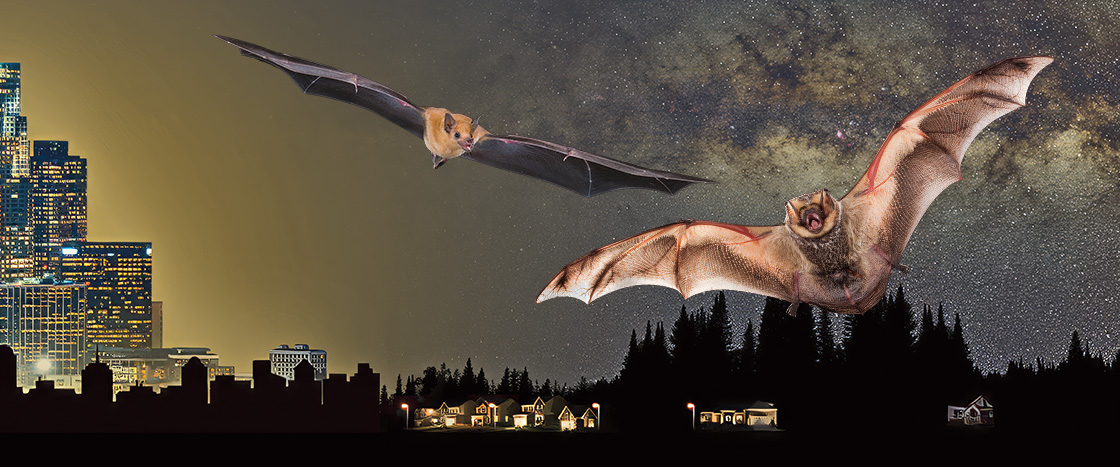The sun has set and the moon glows. As you pull up your covers and begin to nod off to sleep, there’s a creature outside your window doing just the opposite. An owl swivels its head, listening for prey. It’s alert and refreshed from a day’s rest.
It’s not alone. Many other animals are just waking up. A fox creeps on silent paws. Bats take flight in a whoosh of wings. Moths and crickets emerge from bushes and trees. These are nocturnal animals, and they thrive in the darkness. In fact, they couldn’t survive without it!
But this darkness is disappearing. Artificial light—light produced by humans—blazes from sources like streetlamps, billboards, and security lights. As a result, much of our planet is never completely dark at night.
In fact, the planet is getting brighter all the time. One study found that the night sky has been doubling in brightness every eight years! This light pollution is harming animals that are active at night.
The sun has set. The moon glows. You pull up your covers. You begin to fall asleep. But there’s an animal outside your window. It’s not sleepy at all. The owl turns its head. It’s listening for prey. It’s been resting all day. So it’s wide awake.
It’s not alone. Many animals are just waking up. A fox walks on quiet paws. Bats take flight. Moths and crickets come out. These are nocturnal animals. They love the dark. In fact, they couldn’t survive without it!
But this darkness is fading. That’s because of artificial light. It’s light made by humans. It comes from streetlamps, billboards, and security lights. Much of our planet is never totally dark at night as a result.
The planet is getting brighter all the time. Here’s what one study found. The night sky has been doubling in brightness. That’s happening every eight years! The result is light pollution. It’s hurting animals that are active at night.

